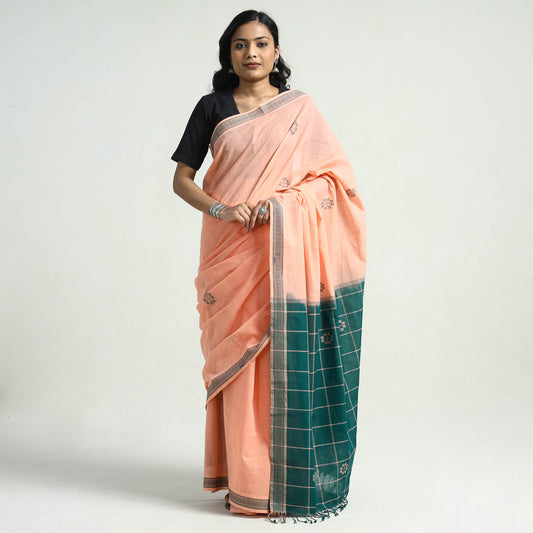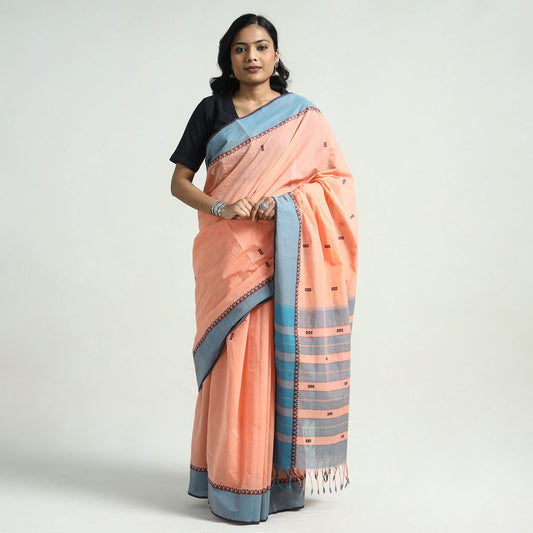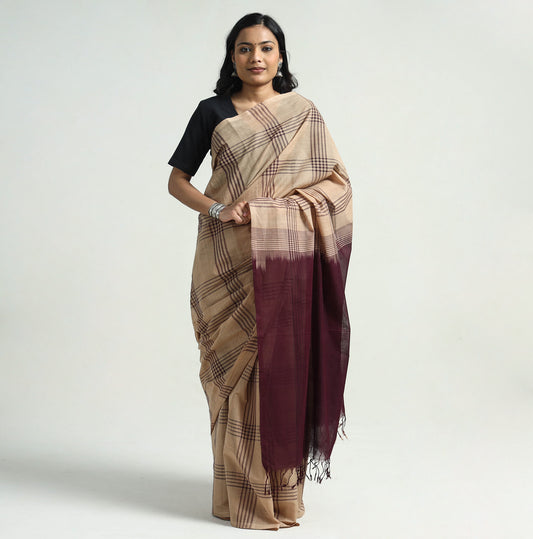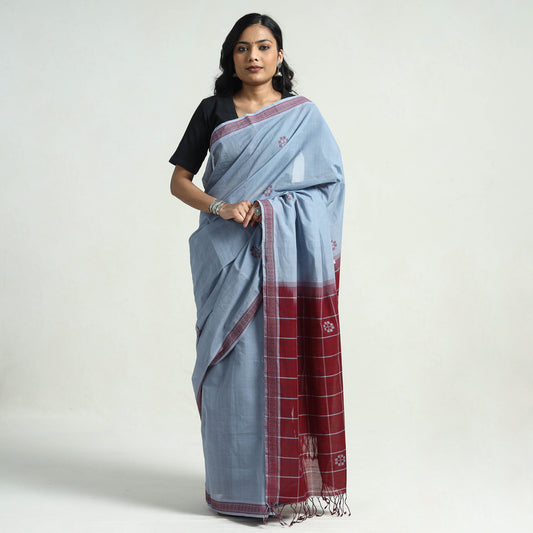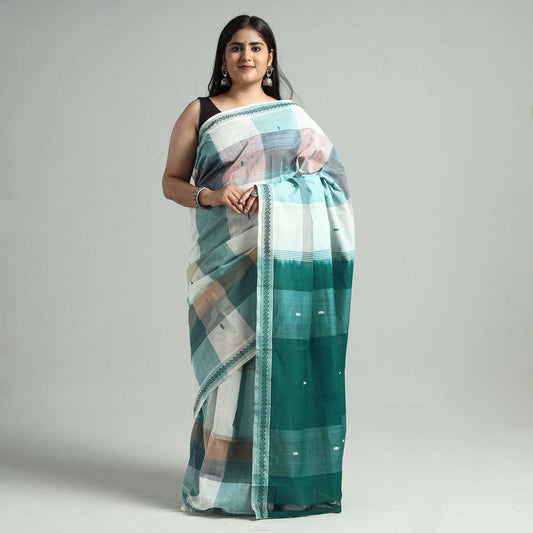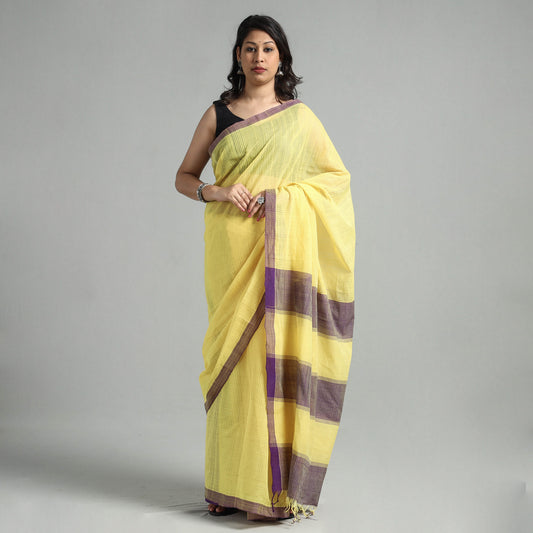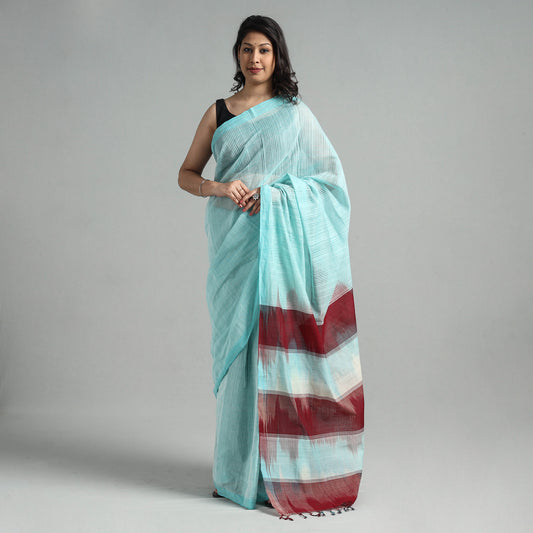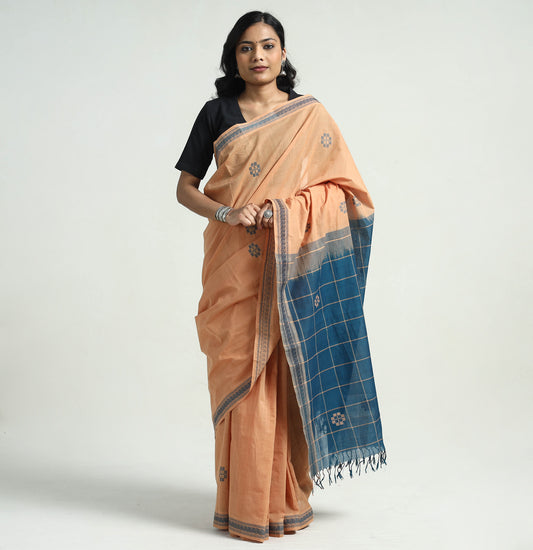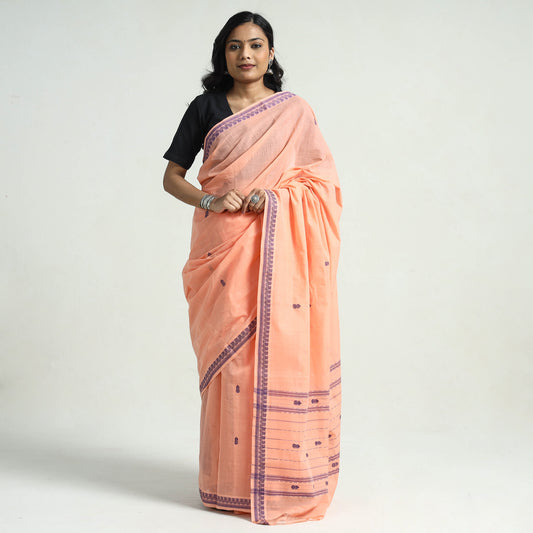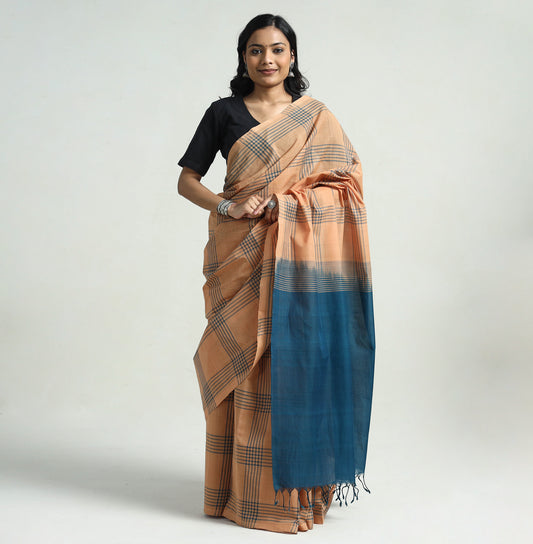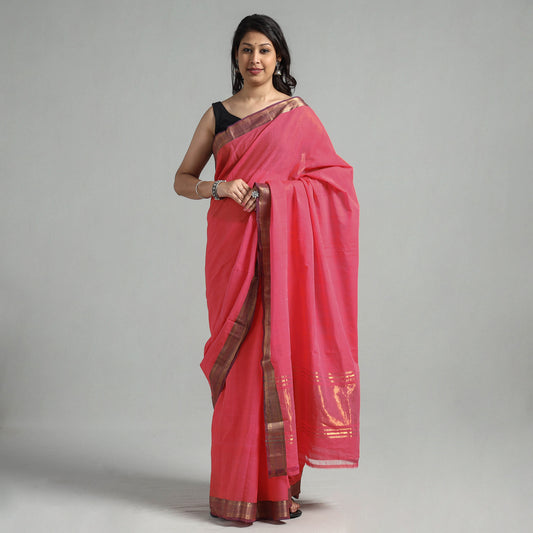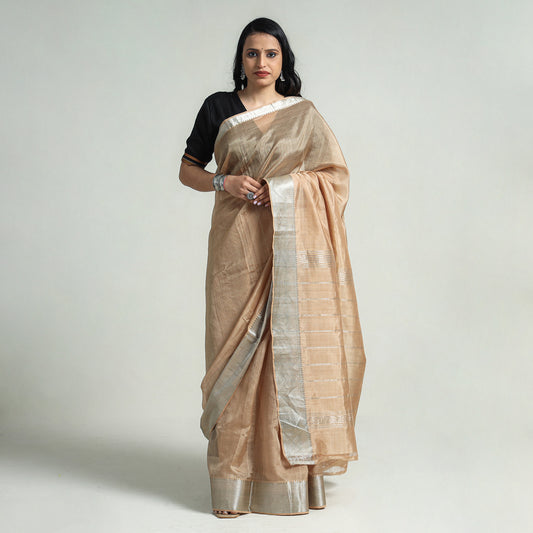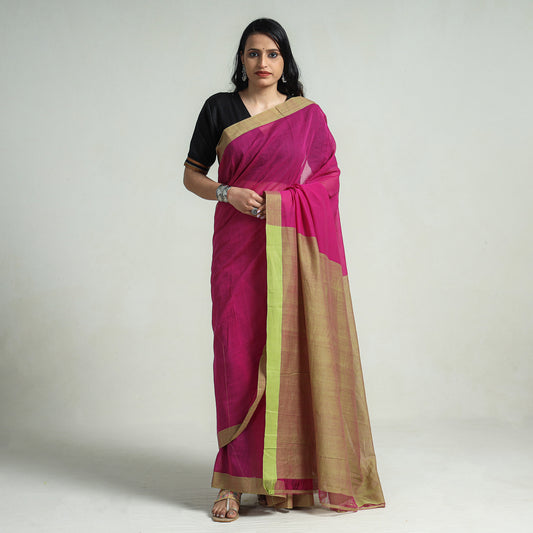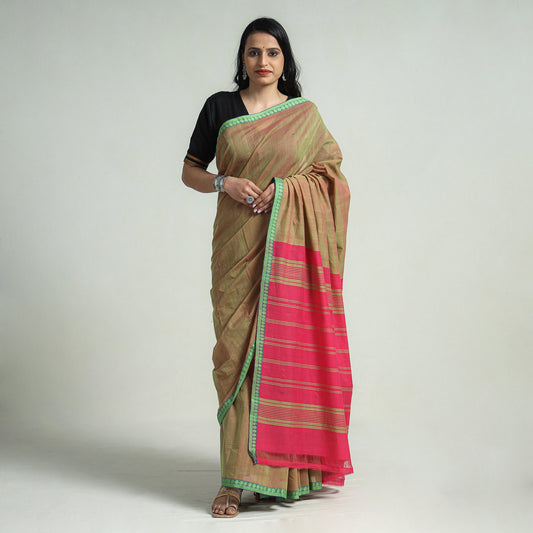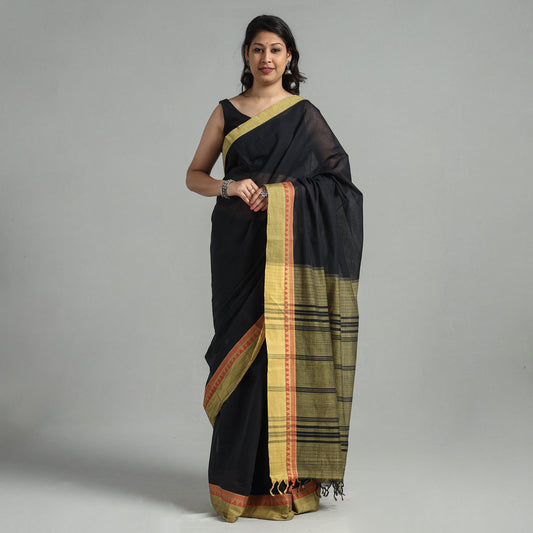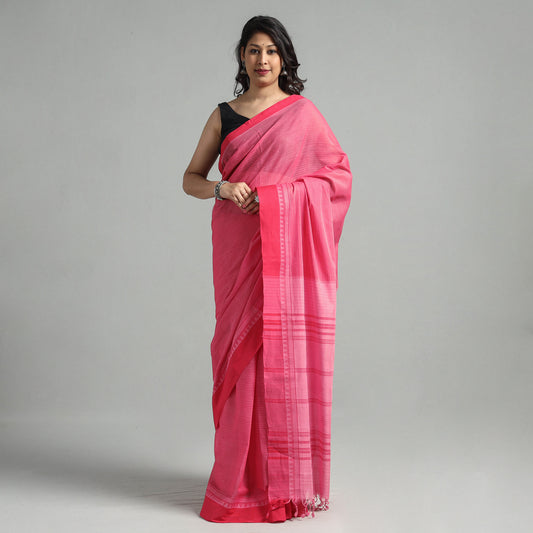Mangalagiri Sarees: The Legacy of Handloom Excellence
Mangalagiri sarees are more than just garments; they are a testament to the rich cultural heritage of Andhra Pradesh, where the ancient art of weaving has been passed down through generations. Named after the town of Mangalagiri, nestled between the bustling cities of Vijayawada and Guntur, these sarees have been a symbol of traditional elegance for over 500 years. Mangalagiri is not just known for its exquisite handloom sarees but also for the revered Panakala Narasimha Swamy Temple, which draws devotees from across the country. The weaving of Mangalagiri sarees is deeply intertwined with the town’s spiritual and cultural practices, making these sarees a cherished part of Indian heritage.
The Art of Weaving Mangalagiri Sarees
The creation of a Mangalagiri saree is a meticulous process that involves skill, patience, and a deep understanding of the craft. These sarees are traditionally woven on handlooms, a practice that has been preserved in Mangalagiri for centuries. The weavers, primarily from the Devanga and Padmasali communities, have honed their craft to perfection, creating sarees that are both durable and aesthetically pleasing.
1. The Weaving Process:
The process of weaving Mangalagiri sarees begins with the preparation of the yarn. The cotton or silk threads are carefully selected and dyed using both natural and synthetic dyes, depending on the desired color and finish. The threads are then stretched and wound onto bobbins, ready to be woven into fabric.
The weaving itself is done on traditional pit looms, where the weaver sits in a pit with the loom above them. This technique allows for greater control and precision, ensuring that each saree is woven with the utmost care. The hallmark of Mangalagiri sarees is their plain body with a contrasting border, often featuring intricate zari work. The zari borders are woven using gold or silver threads, adding a touch of opulence to the otherwise simple design.
The weavers of Mangalagiri are known for their mastery of the “Nizam border,” a signature feature of these sarees. This border is characterized by its minimalist yet elegant design, with simple geometric patterns or temple motifs that are deeply rooted in the region’s cultural and religious traditions.
2. Types of Mangalagiri Sarees:
Mangalagiri sarees come in various types, each with its own unique characteristics and appeal. At iTokri, we offer an extensive range of Mangalagiri sarees that showcase the versatility and timeless beauty of this traditional craft.
• Mangalagiri Cotton Sarees: These sarees are made from the finest cotton, making them lightweight, breathable, and perfect for daily wear. The simplicity of the design, with a plain body and a contrasting zari border, makes them ideal for both casual and formal occasions. Mangalagiri cotton sarees are known for their durability and comfort, making them a staple in many wardrobes.
• Mangalagiri Pattu Sarees: A luxurious blend of cotton and silk, Mangalagiri Pattu sarees are woven with the same attention to detail as their cotton counterparts but with an added touch of opulence. The silk threads give these sarees a subtle sheen, making them perfect for weddings, festivals, and other special occasions. The zari borders on Pattu sarees are often more elaborate, featuring intricate designs that reflect the weavers’ skill and creativity.
• Mangalagiri Silk Sarees: Entirely woven from silk threads, these sarees are a symbol of luxury and elegance. The smooth, lustrous texture of silk combined with the traditional Mangalagiri weaving techniques results in a saree that is both rich and lightweight. These sarees are available in a wide range of colors and are ideal for formal events and celebrations.
• Mangalagiri Handloom Sarees: These sarees are the epitome of traditional craftsmanship, woven entirely by hand using age-old techniques. Each handloom saree is unique, with slight variations in the weave that add to its charm and authenticity. The weavers take great pride in their work, ensuring that each saree is a masterpiece of handloom artistry.
Colors and Symbolism in Mangalagiri Sarees
The color palette of Mangalagiri sarees is both vibrant and varied, catering to different tastes and preferences. The colors used in these sarees are often symbolic, reflecting the cultural and spiritual significance of the sarees.
• Red and Maroon: These colors are deeply rooted in Indian culture, symbolizing power, passion, and tradition. Red and maroon Mangalagiri sarees are often worn during weddings, festivals, and religious ceremonies.
• Green: Green is a symbol of fertility, prosperity, and growth. It is a popular color for Mangalagiri sarees, particularly for auspicious occasions.
• Yellow: Yellow represents purity, spirituality, and enlightenment. It is a favored color for religious ceremonies and rituals.
• Blue and Turquoise: These colors are associated with calmness, serenity, and the infinite nature of the sky and ocean. They are ideal for formal gatherings and evening wear.
• Black: While traditionally less common in Indian sarees, black Mangalagiri sarees are gaining popularity for their elegance and versatility. Black symbolizes power and sophistication, making it a perfect choice for contemporary fashion.
The Region and Communities Behind Mangalagiri Sarees
Mangalagiri is not just a geographical location; it is a vibrant cultural hub where the ancient art of weaving has flourished for centuries. The town’s history as a weaving center dates back to the Vijayanagara Empire, which patronized the weavers and provided them with the resources needed to hone their craft. The Devanga and Padmasali communities, who have been weaving in Mangalagiri for generations, are the torchbearers of this rich tradition.
The weavers of Mangalagiri are renowned for their skill and attention to detail. The weaving community has preserved traditional techniques while also adapting to modern demands, ensuring that Mangalagiri sarees remain relevant in contemporary fashion. The weaving process is often a family affair, with multiple generations working together to produce these beautiful sarees.
The town’s proximity to the Krishna River has also played a crucial role in the development of its weaving industry. The river provides a reliable source of water for dyeing the threads, and the fertile land around Mangalagiri ensures the availability of high-quality cotton, which is essential for weaving.
Why Mangalagiri Sarees from iTokri?
At iTokri, we are committed to bringing you the finest Mangalagiri sarees, each one a reflection of the rich heritage and craftsmanship of Andhra Pradesh. Our sarees are sourced directly from the artisans of Mangalagiri, ensuring that you receive a product that is authentic and of the highest quality.
By choosing a Mangalagiri saree from iTokri, you are not only acquiring a beautiful piece of traditional Indian attire but also supporting the weavers who have dedicated their lives to preserving this ancient craft. We take pride in promoting sustainable and ethical practices, ensuring that every saree you purchase contributes to the well-being of the artisan community.
Our collection of Mangalagiri sarees is diverse, offering something for everyone. Whether you are looking for a simple cotton saree for daily wear or a luxurious silk saree for a special occasion, iTokri has the perfect saree for you. Each saree is carefully curated to maintain the authenticity and integrity of the Mangalagiri tradition, ensuring that you receive a garment that is both beautiful and culturally significant.
Explore the exquisite collection of Mangalagiri sarees at iTokri and discover the perfect saree for any occasion. Whether you are drawn to the simplicity of a Mangalagiri cotton saree or the opulence of a Mangalagiri silk saree, our collection has something to offer every saree enthusiast. Shop now and experience the timeless elegance of Mangalagiri handloom sarees, crafted with love and care by skilled artisans.
FAQ Section:
1. What are Mangalagiri sarees?
• Mangalagiri sarees are traditional Indian sarees handwoven in the town of Mangalagiri, located in Andhra Pradesh. These sarees are known for their simple yet elegant design, featuring a plain body with a contrasting border, often adorned with zari work. Mangalagiri sarees are celebrated for their fine quality, durability, and comfort.
2. How are Mangalagiri sarees made?
• Mangalagiri sarees are meticulously handwoven on traditional pit looms. The process involves preparing the yarn, which is then dyed and woven into fabric using cotton or silk threads. The sarees are characterized by their plain body and distinctive zari borders, which are woven with gold or silver threads. The weaving process is carried out by skilled artisans from the Devanga and Padmasali communities, who have honed this craft over generations.
3. What types of Mangalagiri sarees are available at iTokri?
• iTokri offers a diverse range of Mangalagiri sarees, including:
• Mangalagiri Cotton Sarees: Lightweight and breathable, ideal for daily wear.
• Mangalagiri Pattu Sarees: A blend of silk and cotton, perfect for special occasions.
• Mangalagiri Silk Sarees: Entirely woven from silk, offering a rich, luxurious feel.
• Mangalagiri Handloom Sarees: Handwoven sarees that showcase traditional craftsmanship and unique variations.
4. What colors are commonly used in Mangalagiri sarees?
• Mangalagiri sarees are available in a wide range of colors, from vibrant hues to subtle pastels. Common colors include:
• Red and Maroon: Symbolizing tradition and power, often worn during weddings and festivals.
• Green: Representing fertility and prosperity, popular for auspicious occasions.
• Yellow: Denoting purity and spirituality, frequently chosen for religious ceremonies.
• Blue and Turquoise: Associated with calmness and serenity, ideal for formal gatherings.
• Black: Symbolizing sophistication, increasingly popular for contemporary fashion.
5. How do I identify an authentic Mangalagiri saree?
• To ensure you have an authentic Mangalagiri saree, look for the following features:
• Plain Body with Zari Border: Authentic Mangalagiri sarees typically have a plain body with a contrasting zari border featuring simple geometric or temple motifs.
• Handwoven Fabric: The texture should feel slightly rough yet fine, indicating it is handwoven.
• Traditional Pit Loom Weave: Authentic sarees are woven on pit looms, resulting in a distinct weave pattern.
• Sourced from Reputable Sellers: Purchasing from trusted platforms like iTokri ensures authenticity and quality.
6. How should I care for my Mangalagiri saree?
• To maintain the beauty and longevity of your Mangalagiri saree:
• Hand Wash: Use cold water and a mild detergent for cotton sarees. Avoid wringing the fabric.
• Dry Clean: Recommended for silk and Pattu sarees to preserve their sheen and texture.
• Proper Storage: Store the saree in a cool, dry place, preferably wrapped in a muslin cloth, to protect it from dust and moisture.
7. What occasions are Mangalagiri sarees suitable for?
• Mangalagiri sarees are versatile and can be worn for a variety of occasions:
• Daily Wear: The lightweight and breathable cotton sarees are perfect for everyday use, including office wear and casual outings.
• Festive and Religious Events: Pattu sarees and silk sarees, with their rich texture and elegant zari borders, are ideal for weddings, festivals, and religious ceremonies.
• Formal Gatherings: The luxurious silk sarees are well-suited for formal events and special celebrations.
8. Are Mangalagiri sarees eco-friendly?
• Yes, Mangalagiri sarees are eco-friendly. The traditional weaving process involves minimal use of chemicals, especially in handloom sarees where natural dyes are often used. The use of handlooms also reduces energy consumption, making these sarees a sustainable choice. Additionally, the craft supports local artisans, contributing to sustainable livelihoods.
9. Which communities are involved in the weaving of Mangalagiri sarees?
• The weaving of Mangalagiri sarees is primarily carried out by the Devanga and Padmasali communities in the Mangalagiri region of Andhra Pradesh. These communities have been practicing this craft for generations, passing down their skills and techniques to preserve the art of handloom weaving. The weavers take great pride in their work, ensuring that each saree reflects the rich cultural heritage of the region.
10. Can I find authentic Mangalagiri sarees online at iTokri?
• Absolutely! iTokri offers a curated collection of authentic Mangalagiri sarees, sourced directly from the artisans of Mangalagiri. Each saree in our collection is handwoven with care and precision, ensuring that you receive a genuine product that embodies the rich tradition of Indian handloom. Shopping at iTokri not only guarantees authenticity but also supports the artisans who keep this ancient craft alive.
मंगलगिरि साड़ियाँ: हस्तकरघा उत्कृष्टता की धरोहर
मंगलगिरि साड़ियाँ केवल परिधान नहीं हैं; वे आंध्र प्रदेश की समृद्ध सांस्कृतिक धरोहर का प्रतीक हैं, जहाँ बुनाई की प्राचीन कला पीढ़ियों से चली आ रही है। विजयवाड़ा और गुंटूर के बीच स्थित मंगलगिरि शहर में यह साड़ियाँ 500 वर्षों से पारंपरिक शिल्प का प्रतीक रही हैं। मंगलगिरि केवल अपने उत्कृष्ट हस्तकरघा साड़ियों के लिए ही नहीं, बल्कि पनाकला नरसिंह स्वामी मंदिर के लिए भी प्रसिद्ध है, जो देशभर के श्रद्धालुओं को आकर्षित करता है। मंगलगिरि साड़ियों की बुनाई इस शहर की आध्यात्मिक और सांस्कृतिक परंपराओं से गहराई से जुड़ी हुई है, जिससे यह साड़ियाँ भारतीय धरोहर का एक अनमोल हिस्सा बन गई हैं।
मंगलगिरि साड़ियों की बुनाई की कला
मंगलगिरि साड़ी को बनाने की प्रक्रिया अत्यंत कौशल, धैर्य और शिल्प की गहरी समझ की मांग करती है। ये साड़ियाँ पारंपरिक हस्तकरघा पर बुनी जाती हैं, जो मंगलगिरि में सदियों से संरक्षित है। मुख्य रूप से देवांग और पद्मसाली समुदाय के बुनकर इस कला में महारथ रखते हैं, जो टिकाऊ और सौंदर्यपूर्ण साड़ियाँ बुनते हैं। मंगलगिरि साड़ियों का प्रमुख आकर्षण उनका साधारण शरीर और विपरीत रंग का बॉर्डर है, जिसमें अक्सर जरी का काम होता है। इन साड़ियों की पहचान “निजाम बॉर्डर” से होती है, जो सरलता और शान का प्रतीक है।
मंगलगिरि साड़ियों के प्रकार
मंगलगिरि साड़ियाँ कई प्रकार की होती हैं, जिनमें प्रत्येक की अपनी विशेषताएँ और आकर्षण होते हैं। इनमें शामिल हैं:
• मंगलगिरि कॉटन साड़ियाँ: हल्की और सांस लेने योग्य, यह साड़ियाँ दैनिक उपयोग के लिए आदर्श हैं।
• मंगलगिरि पट्टू साड़ियाँ: रेशम और कपास का संयोजन, यह साड़ियाँ विशेष अवसरों के लिए उपयुक्त हैं।
• मंगलगिरि सिल्क साड़ियाँ: पूरी तरह से रेशम से बुनी हुई, यह साड़ियाँ विलासिता और शान का प्रतीक हैं।
• मंगलगिरि हस्तकरघा साड़ियाँ: पारंपरिक हस्तशिल्प की उत्कृष्टता को दर्शाती हैं।
मंगलगिरि साड़ियों में रंगों और प्रतीकों का महत्व
मंगलगिरि साड़ियों में उपयोग किए गए रंग और रूपांकन गहरे सांस्कृतिक और आध्यात्मिक अर्थों से भरपूर होते हैं, जैसे:
• लाल और मैरून: शक्ति, प्रेम और परंपरा का प्रतीक।
• हरा: उर्वरता और समृद्धि का प्रतीक।
• पीला: शुद्धता और आध्यात्मिकता का प्रतीक।
मंगलगिरि का यह शिल्प कला सिर्फ परिधान नहीं, बल्कि एक सांस्कृतिक धरोहर है, जिसे पीढ़ी दर पीढ़ी संरक्षित किया गया है। iTokri पर उपलब्ध मंगलगिरि साड़ियों का संग्रह इस प्राचीन कला का जीवंत प्रमाण है, जो आपको न केवल सुंदरता प्रदान करता है बल्कि इस कला को जीवित रखने वाले शिल्पकारों का भी समर्थन करता है।


















































